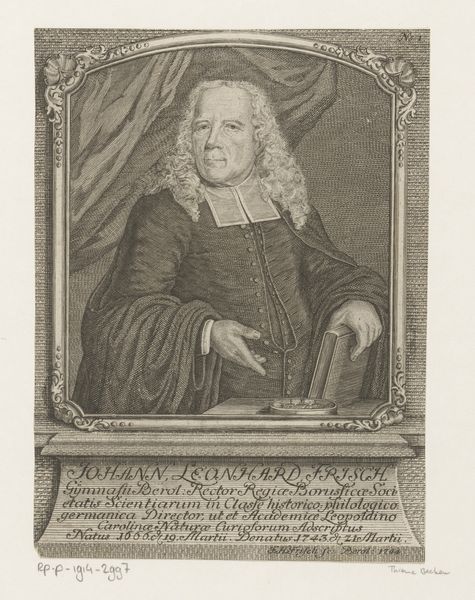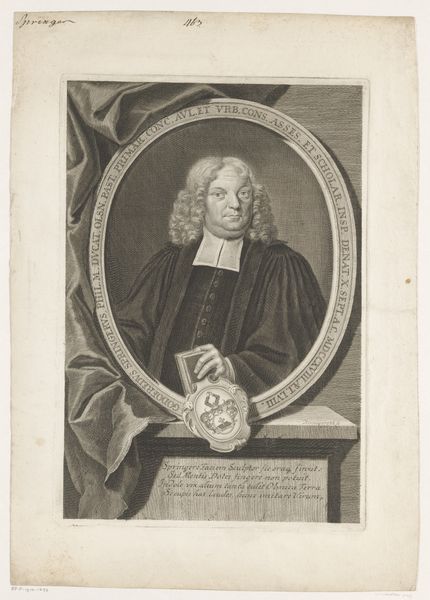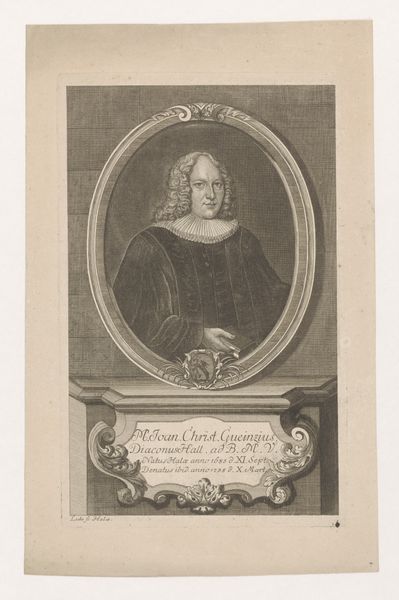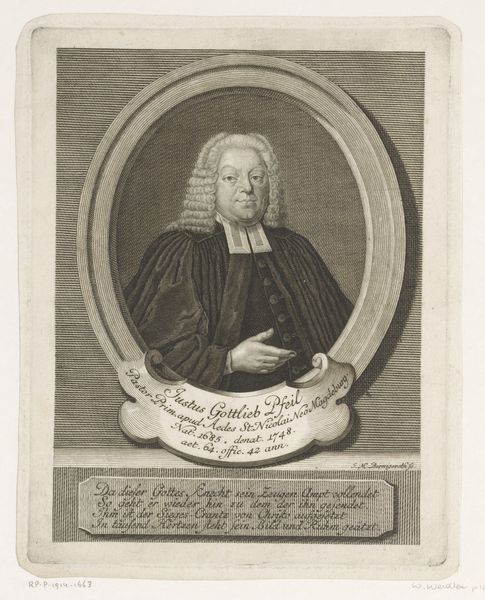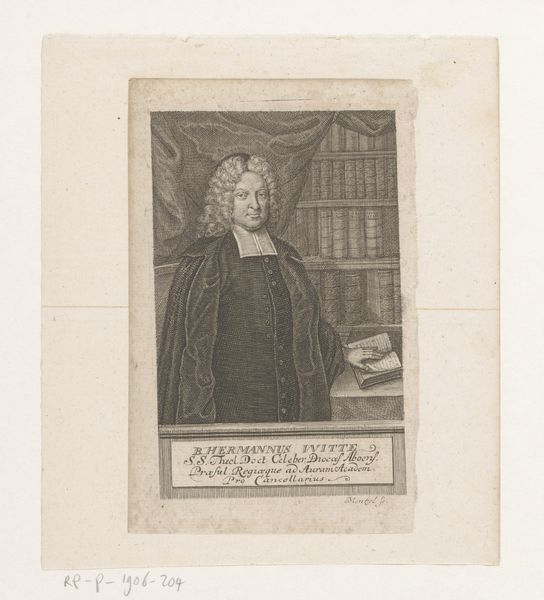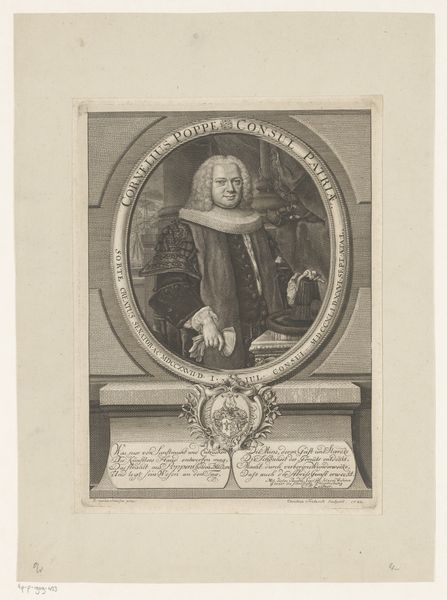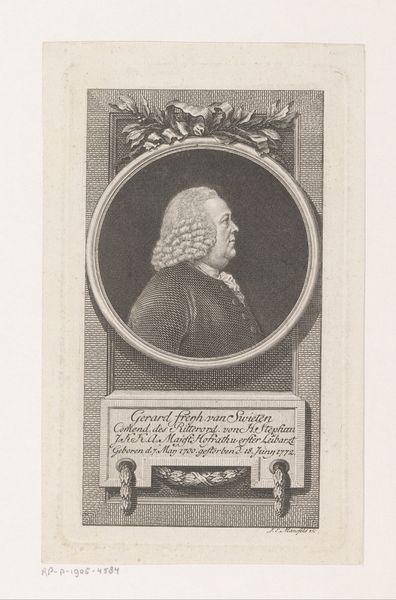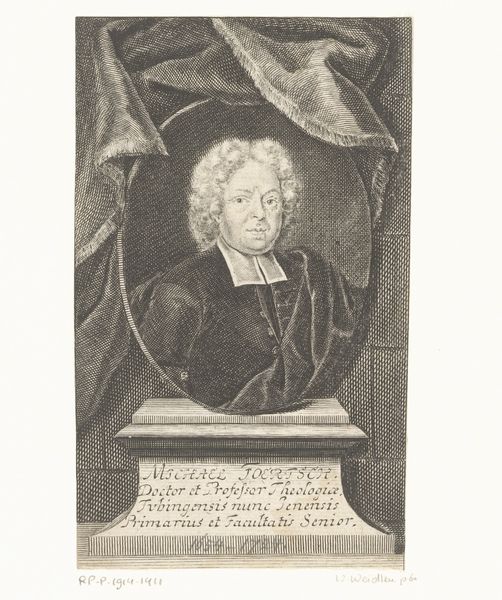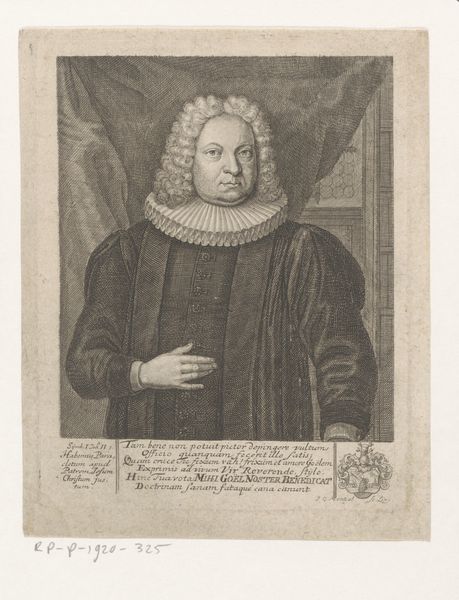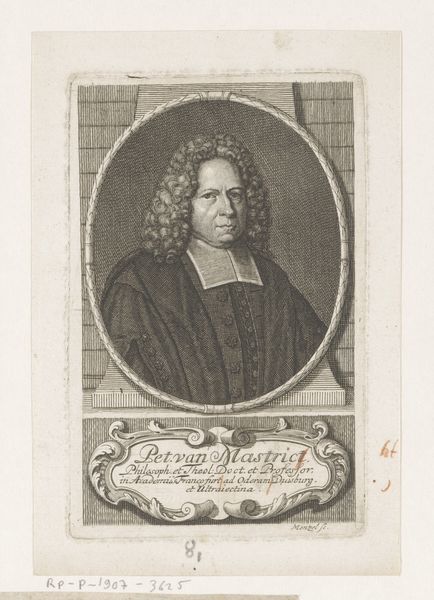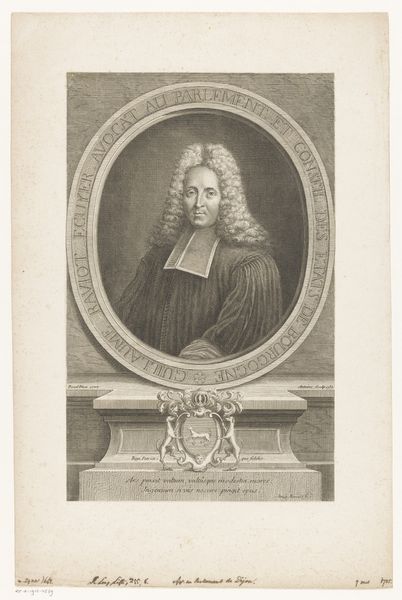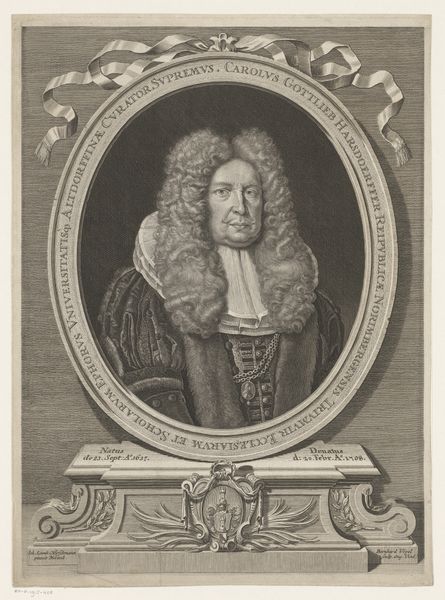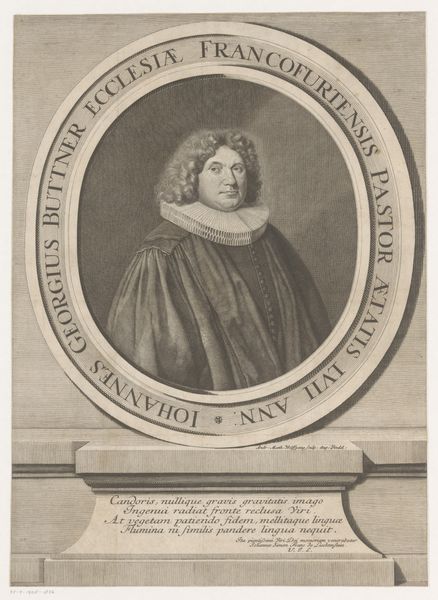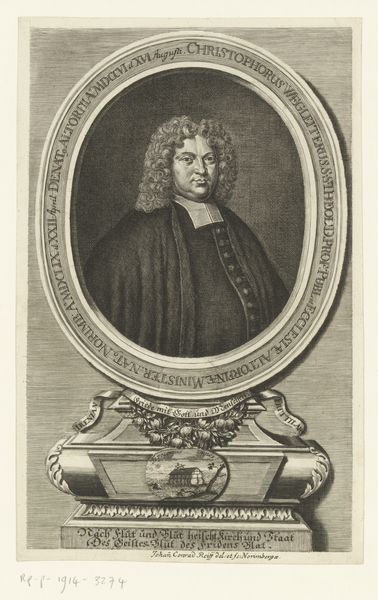
print, engraving
#
portrait
#
baroque
# print
#
history-painting
#
engraving
#
realism
Dimensions: 251 mm (height) x 184 mm (width) (plademaal)
Curator: The image before us is an engraving from 1746 entitled “Morten Reenberg, Præst”, attributed to Odvardt Helmoldt de Lode. What are your initial thoughts? Editor: Stark. I’m struck by the linear quality, the clear separation between light and shadow created solely by incised lines on the plate. One senses both labor and refinement in this type of process. Curator: Indeed. The sharp contrast contributes to the work’s striking visual impact and directs the eye immediately to the central figure within the arched niche. Consider how the use of line dictates not just form but also texture, especially in the subject’s wig and robes. Editor: Beyond form, I’m intrigued by the means of production. Who engraved this, for whom, and how widely was it disseminated? Was this a single print or mass-produced? The print suggests that image production and dissemination were controlled, specialized skills involving a deep understanding of materials, chemicals, and printing processes. Curator: A crucial observation. As a portrait, its visual structure relies on balance and symmetry; consider how the architectural elements of the arch frame the central figure and provide a sense of monumentality. Note the inscriptions flanking his head. Editor: How might the subject's occupation and societal role affect how the engraving would be perceived? Was Reenberg's image carefully crafted as propaganda and widely available? Curator: That consideration definitely affects its impact. In many respects the engraving offers a complex dialogue between the representation of individual character and the assertion of institutional power through symbols and visual cues. Editor: Seeing this interplay between craft and the communication of power provides insight into society in 1746, doesn’t it? Thanks. Curator: My pleasure. Viewing artwork like this allows for appreciating and understanding artistic choices alongside the work’s function as a piece of visual rhetoric.
Comments
No comments
Be the first to comment and join the conversation on the ultimate creative platform.
